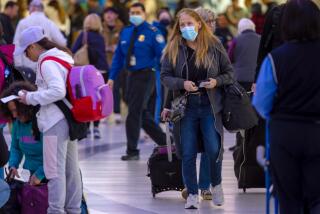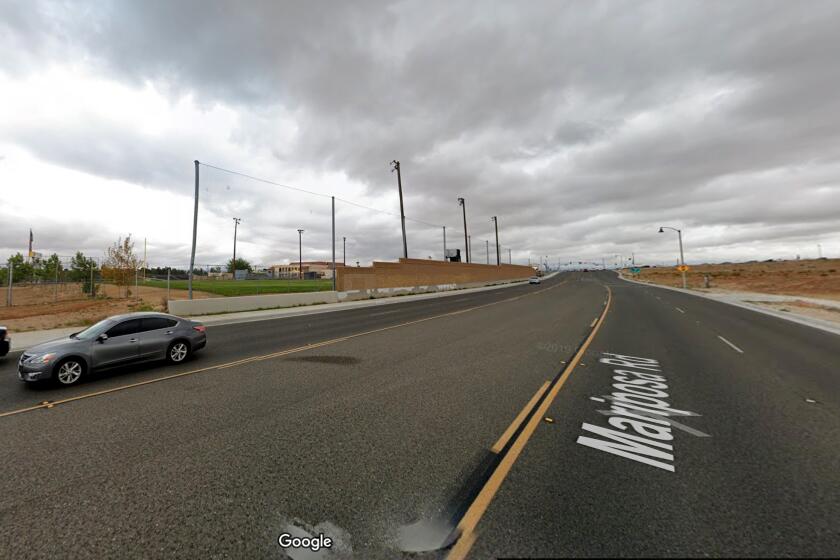SPECIAL REPORT: Oil on the Beach
The Coast at Risk
At first, it was just another ship on the horizon. But all too suddenly the American Trader became much more. A freak accident off Huntington Beach sent 400,000 gallons of Alaskan crude gushing from the ship. The effects of the spill, the largest in Southern California in two decades, will be felt for months to come.
PALOS VERDES PENINSULA
The rocky and picturesque coastline hosts numerous sea creatures that could be affected.
LONG BEACH
Alamitos Bay contains hundreds of pleasure craft and high-priced homes on the waterfront.
ANAHEIM BAY
Containment boom placed across the mouth to keep oil out. Bay is entrance for web of waterways flanked by houses and wildlife. It also serves as nursery for fish.
BOLSA CHICA WETLANDS
Prime wetlands rich with bird, plant and sea life that could be devastated by spill. California brown pelican, least tern and light-footed clapper rail among endangered species that live in the wetlands.
HUNTINGTON BEACH
Among the spots worst hit by oil. Fingers of slick struck beach, leaving a frothy line of oil along several sections. State park is site for aid stations for dozens of birds harmed by spill.
SANTA ANA RIVER
Boom has secured the mouth of the river, which hosts a least tern refuge.
NEWPORT BEACH
City declared state of emergency. Clean up crews scour beach with absorbent pads. Boom covers mouth of harbor. Upper bay reserve is home to 165 species of migratory and resident birds, 60 species of fish, 20 different amphibians and reptiles and 10 mammals.
FACTS:
Profile of the spill
Ship: American Trader, 800-foot tanker.
When: Accident occurred about 4:30 p.m. Wednesday
Where: About two miles off Huntington Beach at Golden West Offshore Moorings.
Oil Spilled: Estimated 400,000 gallons.
The Slick: Continues to spread and change shape, moving onto and off shore with shifting winds and tides.
Imperiled wildlife: Dozens of gulls, grebes, cormorants and scoters washed ashore after spill. Several wetlands, home to fish nurseries, are also threatened.
Clean up: Skimmer boats sweeping ocean. Oil on beaches swabbed up by hundreds of paid crews and volunteers armed with absorbent pads.
SPILL LOCATION, EVENING
Day One (wind 4 mph from south)
Day Two (wind 20 mph from west)
Day Three (wind 5 mph from west)
ANCHOR: The culprit?
The American Trader was maneuvering into a sea berth off Huntington Beach to offload oil when it apparently smacked its anchor, ripping two holes in its hull, spilling 400,000 gallons of crude oil.
1) Swells rocked ship in shallow water.
2) The vessel drifted over port anchor, wrapping the chain around its bow. As crew raised port anchor, officials believe it struck starboard side of hull, leaving three-foot gash and another hole.
3) Some veteran pilots suspect the tanker struck the anchor as it rested on sea floor in shallow water.
Sources: U.S. Coast Guard, news reports
SPILL CLEANUP: Skimming the ocean
Largest “skimmers” to respond to the spill are advanced vessels which collect and recover the oil in one system. Other systems usually use smaller boats to deploy booms which contain the oil and then recover the oil by placing skimmers into the middle of the patch.
MOVING THROUGH THE OIL The vessel moves directly through the middle of an oil patch at about 2 knots. With both arms extended, the vessel can clean a path about 145 feet wide.
SEPARATING OIL AND WATER The oil and seawater are transported to a holding tank on board the vessel. The mixture is then separated (using gravity), and the seawater is returned to the ocean. Each vessel can store only about 1,200 barrels of recovered oil.
SKIMMING THE OIL At the apex of each U-shaped boom, the oil is collected in a small enclosure. The oil-seawater mixture is pumped to the vessel for separation.
DEPLOYING THE BOOMS Two 50-foot arms extend off both sides of the boat. These arms deploy the booms which have a two-and-a-half foot skirt made of rubberized material. The booms are positioned into U-shapes behind the arms.
ENVIRONMENT: Attack on the food chain
It may take years before the full extent of the environmental damage becomes known--as the toxic effects of the oil moves through the food chain. Oil is absorbed by the lower elements in the chain--invertebrates and mussels--and passed to the fish that feed on them. Birds and mammals will suffer ill effects from feeding on the toxic fish.
MARINE MAMMALS Sea lions risk losing the insulating value of their fur if exposed to oil.
Dolphins and whales appear to be able to avoid the oil, but dolphins can suffer the effects if they eat contaminated food.
FISH Because it is not breeding season, the direct effects of oil are expected to be slight on most adult fish off the Orange County coast. The greatest concern is over fish which eat contaminated food. Another concern is that bottom-dwelling fish, such as halibut, may suffer if the oil settles on the ocean floor.
MUSSELS AND SNAILS Oil can accumulate in these mollusks. Toxins can be passed along to several species of birds, such as the goldeneye, harlequin ducks and oystercatchers.
INVERTEBRATES These creatures, which live in sandy flats and salt marshes, would be smothered by a large coating of oil or killed by its toxic effects. Clams, oysters, slugs, sponges and other invertebrates are an important food source for many marine animals.
BIRDS Thousands of migratory and resident sea birds in the waters off Orange COunty could die if they ingest oil while attempting to clean their feathers. Another major cause of death to oil-covered birds is hypothermia: their matted feathers no longer insulate their bodies.
FOWL: Cleaning up the birds.
The birds which are brought to the Huntington Beach treatment center are usually in shock.
* Injured birds are evaluated and tagged. They are placed in a warm, dark container to calm them down and prevented from cleaning themselves to avoid swallowing oil.
* Birds are tube-fed a high-protein liquid diet. “Bird Gatorade,” which cleans out ingested oil.
* The solution used to wash the birds consists of one-part Dawn dish soap and three-parts warm water.
* Washers work in teams of two, one clamping the bird’s bill while the other washes. Takes up to 15 washings before oil is removed.
* A Q-tip is used to clean the bird’s bill.
Threatened ecological reserves
The Newport and Bolsa Chica ecological reserves are areas where greatest harm could come from oil contamination. Both reserves are the temporary home for thousands of migratory birds and marine life. Concern is birds could bring back oil residue to their nests, killing eggs. Fortunately, several migratory species have not arrived in region.
More to Read
Start your day right
Sign up for Essential California for news, features and recommendations from the L.A. Times and beyond in your inbox six days a week.
You may occasionally receive promotional content from the Los Angeles Times.






